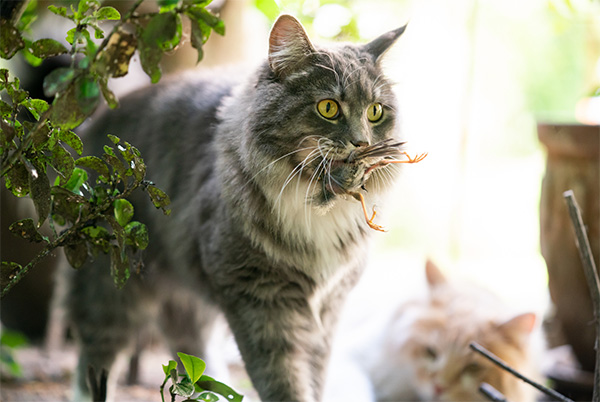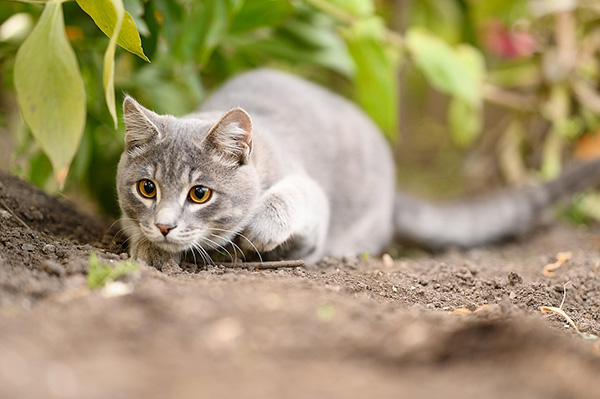Ever stepped outside and discovered an unwelcome surprise waiting right at your doorstep? If you share your home with a curious feline, you’ve likely experienced the heart-pounding surprise of a prized—or perhaps decaying—mouse, bird, or lizard dropped lovingly on your welcome mat. Before you shudder and reach for the broom, know this: your cat isn’t staging a horror show. It’s all part of their wild heritage, an instinctive gesture of love (and teaching) that dates back to their days in the great outdoors.
In this post, we’ll dive into why your cat brings you dead animals and reveal what those “presents” really say about your kitty’s bond with you.
Instinctive Hunting Drive
Even the most pampered house cat carries the soul of a wild predator, and its instinct to hunt remains strong. Beneath its soft paws and playful pounces lies a finely tuned hunting machine honed by thousands of years of evolution. Chasing, stalking, and capturing prey aren’t simply pastimes—they’re hardwired behaviors that help cats stay mentally and physically sharp.
When your kitty suddenly bolts after a toy mouse or delivers a lifeless gift, it’s not mischief; it’s a natural sequence of hunting instincts unfolding. This drive ensures they practice crucial skills—patience, precision, and pounce power—even if their stomach is full.
For indoor cats or to keep cats indoors, cat owners must satisfy their cats’ hunting instincts through play and environmental enrichment that mimics real hunting prey. Schedule multiple short sessions daily using wand toys, laser pointers, or puzzle feeders that mimic prey movement. Rotate toys frequently to maintain novelty and incorporate hiding spots or elevated perches to encourage natural stalking. Providing regular “meals” of interactive kibble-dispensing toys before playtime can also simulate the hunting-to-eating sequence and reduce the urge to hunt real animals. Over time, your cat will associate play-based hunting with reward, keeping local wildlife safe, and your doormat critter-free.
Sharing a Meal

In the wild, some outdoor cats bring you dead animals as a natural behavior. From the cat's point of view, you two are housemates. Since you provide all the food, your cat may like to contribute in some ways to show you love while satisfying a cat's desire to hunt.
If you have female cats, it is often her way to demonstrate love through the delivery of fresh prey to her kittens. This nurturing behavior ensures the young learn essential hunting and eating skills. When your domestic cat leaves a “gift” on your doorstep, she may be extending this same maternal natural instinct to you—an honored member of her feline family. When your cat brings a dead mouse, dead birds (be careful where you put bird feeders), or even kibble, your cat is saying, “I care about you and want you to eat well.”
While the sight (and smell) of dead "gifts" can be startling, it’s a heartwarming gesture rooted in kinship. Embrace these unwelcome offerings as tokens of affection, then safely dispose of the critters and reinforce positive play-based feeding routines to satisfy your cat’s natural generosity.
To discourage this behavior, first ensure your cat’s nutritional needs are met by feeding balanced meals before outdoor time, or switch to timed feedings if she roams. Reducing hunger-driven hunts helps curb gift-giving. Next, enrich her environment with food-dispensing toys and puzzle feeders that simulate the catch-to-eat sequence, satisfying her sharing impulse without real prey.
Teaching and Training
Cats aren’t just solitary hunters—they’re also patient teachers. In feral colonies, mother cats demonstrate hunting techniques by calling their kittens, stalking prey, and sharing the catch. When your cats bring dead animals or a toy to your feet, they might involve you in this age-old ritual. It’s her way of passing on valuable patience, precision, and timing lessons. By presenting prey, she’s signaling, “Observe and learn,” reinforcing the behaviors that keep her sharp.
Replace real prey with interactive play, mimicking hunting and teaching rituals to disrupt this cycle. Begin by scheduling twice-daily training sessions using feather wands or motorized toys, allowing your cat to stalk and “capture” in a controlled setting. Reward each successful pounce with a small treat, reinforcing the behavior without real animals. Incorporate clicker training to mark precise moments of engagement, helping your cat learn that toys—not wildlife-earn praise. Over time, these structured sessions satisfy her urge to instruct and strengthen your bond, effectively preventing unwanted offerings on the doorstep while honoring her inner teacher.
Affection and Bonding
Beyond instinct and instruction, cats that catch prey and bring dead animals to their owners are a way to express love. By presenting you with their “catch,” your feline is inviting you into their inner circle—a privileged bond reserved for trusted companions.
Sharing resources strengthens social ties in cat society, and your home is perceived as their safe haven. Offering prey or cat toys symbolizes trust: they believe you’ll cherish or at least tolerate their offering. Embracing these tokens with gentle praise—rather than alarm—reinforces positive interactions and deepens mutual affection. Next time your cat delivers a slightly squashed mouse or beloved toy, recognize it as a sincere, if quirky, love note from your whiskered friend, celebrating the special partnership you share.
Finally, enrich her environment with regular interactive play sessions and puzzle feeders, ensuring she feels connected to you without resorting to genuine kills. With time, your cat will come to understand that toys, not animals, are the better way to show her love.
Attention Seeking

Sometimes, your outdoor cat’s “gifts” are less about hunting prowess and more about grabbing your focus. Felines quickly learn that delivering a prized—or peculiar—item sparks an immediate, often dramatic, response. Whether it’s delight, disgust, or alarm, your reaction reinforces the behavior, turning gift-giving into a reliable attention magnet. In households where playtime or cuddles are at a premium, your cat may resort to this instinctive trick to ensure you drop everything and engage.
Schedule regular interactive sessions with toys, feather wands, or puzzle feeders to redirect this impulse so your cat knows when to expect dedicated attention. Over time, she’ll discover that friendly play and gentle petting—not a stinky mouse on the mat—are surefire ways to win your affection.
Seeking your approval
Cats quickly learn which behaviors earn them your affection and approval. When they deliver a “gift,” they test your reaction—hoping for praise, gentle petting, or a celebratory smile. In their minds, a successful hunt followed by your warm response cements their status as valued household members.
Over time, they associate gifting with positive reinforcement and repeat it whenever they crave validation. If a treasured toy or unfortunate critter scores them extra cuddles, they’re more likely to bring another offering. Respond enthusiastically when your cat delivers a toy instead of actual prey to channel this drive constructively. By reinforcing safer “gifts,” you satisfy their need for approval while steering their instincts toward playful bonding moments while protecting local wildlife.
Territorial motives
Cats are inherently territorial, viewing their spaces—indoors and out—as extensions of themselves. When your cat leaves prey or finds objects at the thresholds of doorways, windowsills, or favorite resting spots, she’s doing more than sharing: reinforcing territorial claims. Each deposited “gift” carries her scent and the scent of her catch, creating a scented perimeter that warns other animals (and even other household cats) to keep their distance.
This behavior can serve as a dominance ritual in multi-cat homes, subtly communicating, “I control this territory,” and helping maintain the social hierarchy. Outdoor cats may bring in larger prey, like rodents or birds, marking their hunting grounds' interior and exterior boundaries. Recognizing this territorial instinct can show why some “gifts” appear in the same spots repeatedly.
Understand that your cat is safeguarding her domain rather than seeing them solely as unwanted surprises. This instinct traces back to her wild ancestors, who relied on scent markers to establish and defend home ranges. Acknowledging and accommodating this behavior can reinforce your cat’s sense of security (for example, providing enriched indoor territories and interactive play) while maintaining harmony in your shared space.
